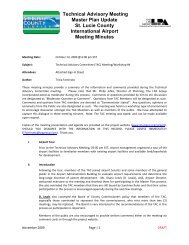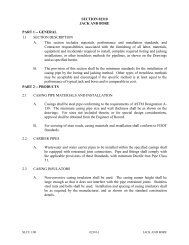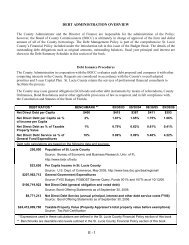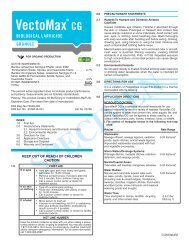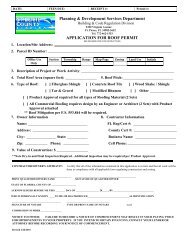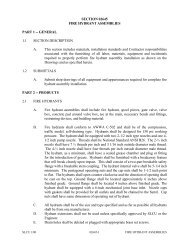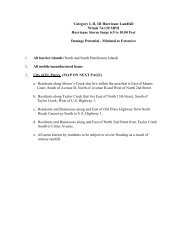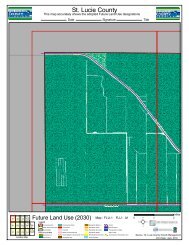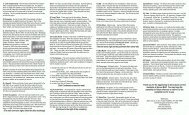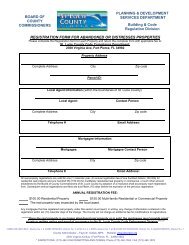Native Habitat Inventory Final Report 2004 - St. Lucie County
Native Habitat Inventory Final Report 2004 - St. Lucie County
Native Habitat Inventory Final Report 2004 - St. Lucie County
Create successful ePaper yourself
Turn your PDF publications into a flip-book with our unique Google optimized e-Paper software.
Site Data Summaries<br />
Overview<br />
This county-wide native habitat inventory will be used to assist the <strong>County</strong>’s Land<br />
Acquisition Selection Committee in selecting the highest priority sites for preservation<br />
via the Environmentally Sensitive Lands (ESL) Program. This series of tasks consisted<br />
of collecting and reviewing existing data sources, identifying potential sites, requesting<br />
access permission, developing field data, conducting the field inventory, and data<br />
management and analysis.<br />
Collect Existing Inventories<br />
GIS and non-GIS ecological resource information for <strong>St</strong>. <strong>Lucie</strong> <strong>County</strong> and the Treasure<br />
Coast region was identified and collected. The information sources were accessed in<br />
several ways including:<br />
• Review of <strong>County</strong>’s files including GIS data and reports<br />
• Review of SFWMD, FWC and FNAI data and files<br />
• Discussions with the <strong>St</strong>eering Committee<br />
• Review of the gray and peer-reviewed literature<br />
The purpose of identifying and reviewing existing data sources was to create an<br />
understanding of the existing natural resources previously identified within <strong>St</strong>. <strong>Lucie</strong><br />
<strong>County</strong>. The Bibliography provides a list of sources and databases used in this study.<br />
Identify Potential Sites for Surveying and Recommendations for Site Selection<br />
The quantitative assessment of the acres of natural area lost and conserved indicated there<br />
were 93,385 acres of potential natural area within the county. From this all existing<br />
public lands were excluded. Then an initial subset was selected, it included all areas<br />
designated as Areas of Conservation Interest or Potential Natural Areas by FNAI (51<br />
sites and 44,031 acres) Figure 6. The list of potential sites was further reduced to 35 sites<br />
with the assistance of the <strong>St</strong>eering Committee and their knowledge of areas that had been<br />
developed since the 2000 aerial photography, were in the process of being developed, or<br />
likely to be developed in the near future.<br />
Requesting Landowner Permission<br />
Based on parcel data, the owners of the 35 sites were identified. A letter describing the<br />
purpose of the study and requesting site access to conduct the survey was sent to all 2,830<br />
landowners within these 35 sites (Appendix H). Property owners were asked to respond<br />
if site access was not granted. Responses from the landowners were recorded. Those<br />
parcels on which landowner permission was denied were identified as such in the GIS<br />
shapefiles that were used for the ground inventories. This prevented accidental trespass<br />
by the field team. On some sites no ground access was permitted. On others there was a<br />
41




